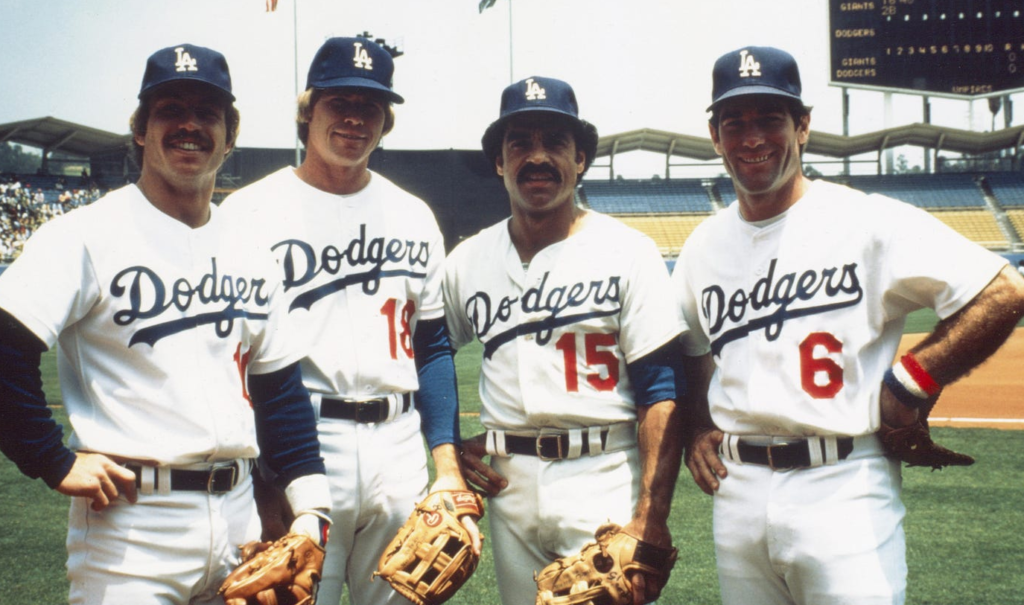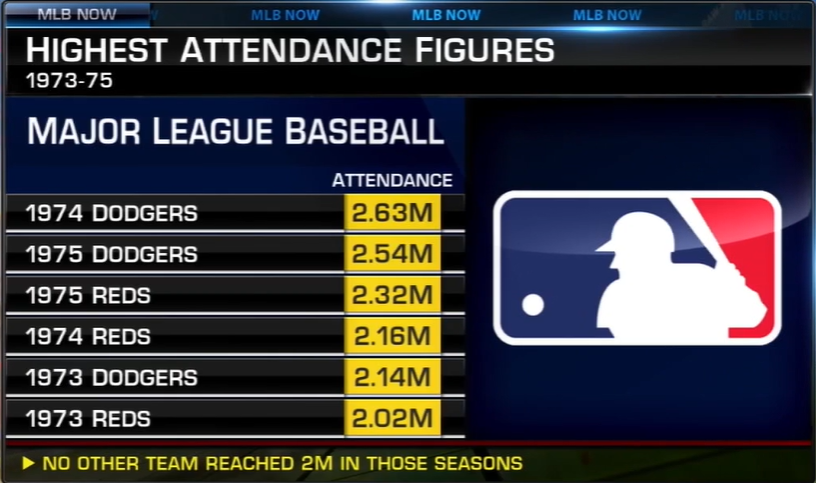CINCINNATI, OH — With the Dodgers heading into their second series in a week with the Reds, it is sure to spark memories in the heads of fans of both teams of “a certain age.” The 1970s were a transformative decade for Major League Baseball, particularly marked by the fierce rivalry between the Los Angeles Dodgers and the Cincinnati Reds. This period saw both teams dominate the National League, with intense battles that featured legendary players, record-breaking performances, and dramatic moments. In the period between when divisional play began in 1969 and the Dodgers’ lone championship of that era, 1981, the two dynasties traded body blows in the NL West with each team making it to four World Series during this period. Arguably, it was the best rivalry in the game at the time. Let’s crank up the Wayback Machine and play a little “remember when”….
The Dodgers’ Core

The Los Angeles Dodgers went into the seventies hoping to replicate the heights the franchise had reached in the 1960s when Koufax and Drysdale led the team to three World Series wins in a period of seven years, with a roster packed with talent. But it was also a period of transition as most of the faces of the great championship teams were now watching from the sidelines. Managed by Walter Alston until 1976 and then by Tommy Lasorda, the Dodgers featured the likes of Steve Garvey, Ron Cey, Davey Lopes, and Bill Russell. This core group of infielders, often referred to as the “Longest Running Infield” in baseball history, played together for eight seasons.
Steve Garvey, the Dodgers’ first baseman, won the National League MVP in 1974 and was a central figure in the team’s lineup. His consistent hitting and leadership were vital as the Dodgers made their push for dominance in the National League West.
The Big Red Machine

The Cincinnati Reds, known as the “Big Red Machine,” were a powerhouse throughout the 1970s. Managed by Sparky Anderson, the Reds boasted a formidable lineup that included Johnny Bench, Joe Morgan, Tony Pérez, and Pete Rose. Bench, an exceptional catcher, won the National League MVP award twice during the decade (1970, 1972) and was a key figure in the Reds’ success.
At second base, Joe Morgan was another MVP (1975, 1976). He was instrumental in the Reds’ back-to-back World Series championships in 1975 and 1976. Morgan’s combination of power, speed, and defensive prowess made him one of the most complete players of the era. Long before his name was tarnished, Pete Rose, aka “Charlie Hustle,” set the tone with his relentless approach and versatility in the field, while first baseman Tony Pérez provided consistent offensive firepower.
Head-to-Head Battles
Both teams finished out of the money in the NL West in the first year of divisional play, 1969—the year that the “Miracle Mets” bested the Baltimore Orioles in the World Series. But from that moment forward, the division belonged to these two squads. The Reds won their first NL crown in 1970 before losing to the Orioles in the World Series. Then, in an anomaly, the Giants took the crown in a weak division in 1971.
But the rivalry between the Dodgers and Reds reached its peak during the mid-1970s. In 1973, the Reds won the National League West, finishing 3.5 games ahead of the Dodgers. Author of the book Cincinnati Red and Dodger Blue: Baseball’s Forgotten Rivalry, said that the season really came down to a couple of pitches in their head-to-head matchups that made the difference: a come-from-behind win in late June on a 9th inning home run, and a George Foster dinger off Claude Osteen in late September. If those two at-bats had gone the Dodgers’ way, it would have been their division that year.

However, the “Big Blue Wrecking Crew” as they were known struck back in 1974, clinching the division with a 102-60 record, finishing four games ahead of the Reds. This was the year that the first Dodger team in nearly a decade made it to the World Series. They were pretty much trounced by Reggie Jackson, Rollie Fingers, and the Oakland A’s that year, but they had made it back to the Promised Land.
The Reds were back in 1975 and 1976, winning back-to-back World Series, the latter being one of the best Fall Classics of all time, the legendary matchup against Carlton Fisk and the Boston Red Sox.
But after 1976, the tide started to turn. The Big Red Machine was on fumes by then and only won 88 games that year. In contrast, the Dodgers were coming into their own. They went to back-back World Series in the 1977 and 1978 season, but lost in World Series both times to their former crosstown rivals in New York, the Yankees.
By the end of the decade, the Reds had six division crowns and four National League pennants to go along with the two World Series trophies. In contrast, the Dodgers had come up empty, three pennants but 0-for-3 in the Fall Classic. The final tallies for the decade showed the dominance of the two teams. The Reds .592 winning percentage was the best of the 1970s, followed by AL powers the Baltimore Orioles. The Pittsburgh Pirates, who pretty much had the NL East to themselves in those days were third, and the Dodgers came in fourth place with a winning percentage of .565 for the decade.
However, it what have been a case of “he who laughs last laughs best,” the Dodgers started the new decade with Fernandomania and a World Series title in 1981. Although, in a cruel trick of history, there was plenty in that year for Reds fans to be salty about. Because of the labor stoppage in the middle of the season, the year was split into two halves, the Dodgers winning the first half of the year pre-strike, and the Houston Astros (pre-trash can) winning the second. But who had the best overall record that year in the NL West? You guessed it, the Cincinnati Reds, who were on the outside looking in at playoff time. Doh!
All Good Things Must End
The Dodgers and Reds rivalry petered out after the creation of the NL Central in the 1990s, but each team had their moment of glory before that happened. Barry Larkin and the Reds swept the Athletics in 1990, and we all know what happened to the Dodgers in that magical 1988 season. Kirk Gibson hobbled around the bases and Orel Hershiser put the entire team on his back and upset the Oakland A’s. But those two teams really belonged to another era. By that time, all the “Glory Days” players were long retired.
However, for those Dodger fans who lived through it, it was a decade of constant excellence and each team pushed the other to be better. And we fans just got to sit back and enjoy the fun.
Have you subscribed to the Bleed Los Podcast YouTube channel? Be sure to ring the notification bell to watch player interviews, participate in shows & promotions, and stay up to date on all Dodgers news and rumors!



